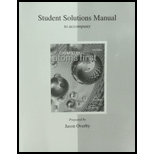
(a)
Interpretation: The preparation of hydrogen chloride, ammonia and lithium hydroxide from hydrogen has to be explained.
Concept introduction:
Hydrogen gas
Hydrogen is a colorless and odorless diatomic gas. It is the first element in the periodic table. Its
(b)
Interpretation: The preparation of hydrogen chloride, ammonia and lithium hydroxide from hydrogen has to be explained.
Concept introduction:
Hydrogen gas
Hydrogen is a colorless and odorless diatomic gas. It is the first element in the periodic table. Its atomic number is one. It reacts with metals and forms metallic hydrides, and reacts with halogens forms hydrogen halides.
(c)
Interpretation: The preparation of hydrogen chloride, ammonia and lithium hydroxide from hydrogen has to be explained.
Concept introduction:
Hydrogen gas
Hydrogen is a colorless and odorless diatomic gas. It is the first element in the periodic table. Its atomic number is one. It reacts with metals and forms metallic hydrides, and reacts with halogens forms hydrogen halides.
Want to see the full answer?
Check out a sample textbook solution
Chapter 25 Solutions
Student Solutions Manual For Chemistry: Atoms First
- with an explaination, state whether you would expect the OH bond in water to be longer or shorter than the SH bond in hydrogen sulfide.arrow_forwardWrite an equation to show that hypochlorous acid , HClO , behaves as an acid in water. + H2O = +arrow_forwardWhich is the stronger acid, HClO3 or HBrO3? Why?arrow_forward
- Complete and balance the following equations. Write the entire equation, including the reactants and products, and include the physical state of each species. (a) K(s) + H2O(l)→ (b) NaH(s) + H2O(l)→arrow_forward11.6. Why is rainwater always acidic, even in the absence of polluting gases such as SO3?arrow_forwardHow would you convert CaO + H2O into Ca(OH)2arrow_forward
 Chemistry: Principles and PracticeChemistryISBN:9780534420123Author:Daniel L. Reger, Scott R. Goode, David W. Ball, Edward MercerPublisher:Cengage Learning
Chemistry: Principles and PracticeChemistryISBN:9780534420123Author:Daniel L. Reger, Scott R. Goode, David W. Ball, Edward MercerPublisher:Cengage Learning Chemistry by OpenStax (2015-05-04)ChemistryISBN:9781938168390Author:Klaus Theopold, Richard H Langley, Paul Flowers, William R. Robinson, Mark BlaserPublisher:OpenStax
Chemistry by OpenStax (2015-05-04)ChemistryISBN:9781938168390Author:Klaus Theopold, Richard H Langley, Paul Flowers, William R. Robinson, Mark BlaserPublisher:OpenStax

